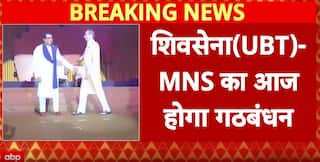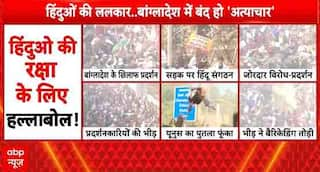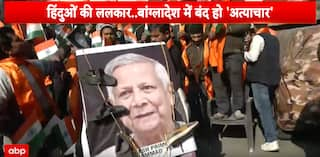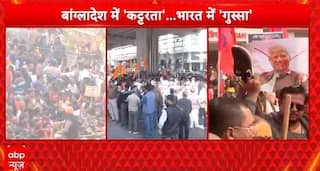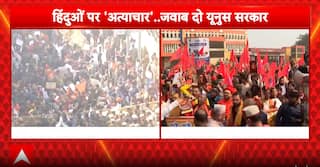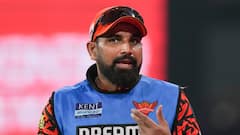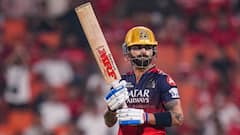Turf Or Matting Wicket? As The Debate Continues, Here Is What Pitch Experts Say
The new ICC rules now allow the use of hybrid pitches at all men's and women's one-day and Twenty20 internationals. Hybrid pitches are a blend of natural grass with artificial turf.

Many associates the use of mat wickets with a serious lack of infrastructure. While some say mat wickets are rather beneficial for budding cricketers, others believe it will be more helpful if they get to play on turf from the beginning.
Turf or mat? Which wicket is better? Over the years, various experts have chosen their sides, but the debate continues. In India, states such as Bihar, Jharkhand, Himachal Pradesh, and some parts of Uttar Pradesh still have the mat culture, with all league matches and even the district matches being played on mat wickets. In comparison, turf wickets can be seen in New Delhi, Uttar Pradesh, Maharashtra, and Rajasthan. Usually, all the international matches are played on turf wickets.
The new ICC rules now allow the use of hybrid pitches at all men's and women's one-day and Twenty20 internationals. Hybrid pitches are a blend of natural grass with artificial turf.
Daljeet Singh, a former First Class cricketer who represented Services, Northern Punjab, Delhi and Bihar, and is now a pitch curator, feels it’s not bad if children start playing cricket on a matting wicket. “But by the age of 15-16, they must shift to turf wicket,” he tells ABP Live, explaining the “turf vs mat wicket” comparison.
Singh recalls days when turf wickets would be found in only a few cities in India. "I have played Ranji Trophy for 19 years. Everyone started off playing on matting wickets only. Turf wickets were there in very few cities. Later on, the board said all the matches of the board will be played on turf wickets only. That was the time when turf wickets came into being and people understood the technique and its care.”
Singh adds: “The biggest thing is that a matting wicket plays in a similar way every day whereas, on a turf wicket, the behavior will change every day.”
According to Nikhilesh Ranjan, a former first-class cricketer of Bihar, there are a few contrasts when it comes to the maintenance of turf and mat wickets. “It is very easy to maintain the matting wicket as no fancy equipment and skills are required — a surface is carved out of hard soil and is used as a base, and then a mat is spread on that surface, and then players can easily play. But it takes a lot of effort when it comes to the maintenance of turf wickets as it requires constant maintenance in the form of skill, labor, fancy equipment, and manpower,” he tells ABP Live.
“The turf wickets require proper grass cutting, constant watering, and proper rolling and it becomes a heavy task to maintain it. That is why, at the initial stages of learning and practicing, mat wicket is used — in order to cut costs of maintenance and as well as set a stage for the basics of practising.”
Batsmen On Mat And Turf
So, what difference does a wicket make for a batsman?
According to Ranjan, “A batsman gets more bounce on the mat than on turf. As a result, their backfoot and side shots like cut and pull become strong. On turf, the conditions keep changing and batters need to play their shots accordingly. Suppose, you are playing a five-day match on a mat wicket, the conditions would remain the same on all days. On the contrary, conditions keep changing when you are playing a five-day match on turf.”
Daljeet Singh shares an anecdote about legendary cricketer Gundappa Viswanath. “He told me once that the shots which he developed. He said he was lucky that he started his career by playing on a matting wicket, which helped him in developing those back foot shots.”
According to Singh, one gets time to play on matting wickets since the ball comes after a lag, and they get a grip over the bat, which doesn’t usually happen on turf wickets.
What Fast Bowlers Say About Mat And Turf
Talking about the techniques used by pace bowlers, Daljeet Singh says: “Once the ball becomes old, it becomes easier for a pace bowler to play on the mat than on turf. A fast bowler has to catch hold of their length and because of the seam, leg cutters and off-cutters work better. This doesn't happen on a turf wicket.”
Nikhilesh Ranjan, however, says there are some difficulties that bowlers face on the mat pitches. “The biggest problem for bowlers is they cannot wear spikes when playing on the mat as nails are used to put the mat in place. So while bowling, there are chances that nails come out, and a mat can also get torn. It is injury prone too for the bowlers if they are bowling without spikes as it reduces their speed. So fast bowlers always prefer to play on turf wickets.”
However, the debate still continues and many people associate the use of mat wickets with a serious lack of infrastructure. While some critics point out that the use of mat wickets is rather beneficial for budding cricketers, others maintain that it will be more helpful if young cricketers are made to practice on turf wickets from the beginning itself.







